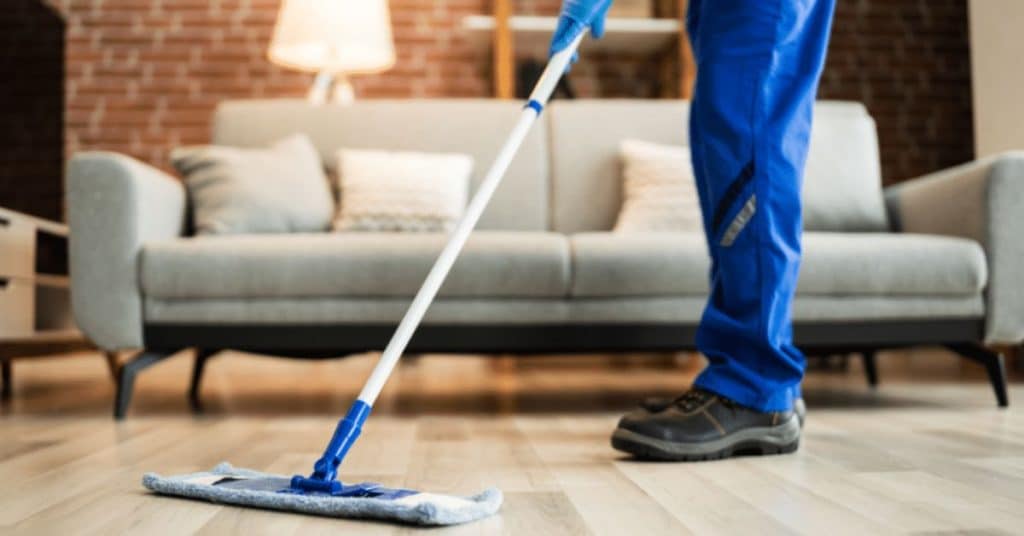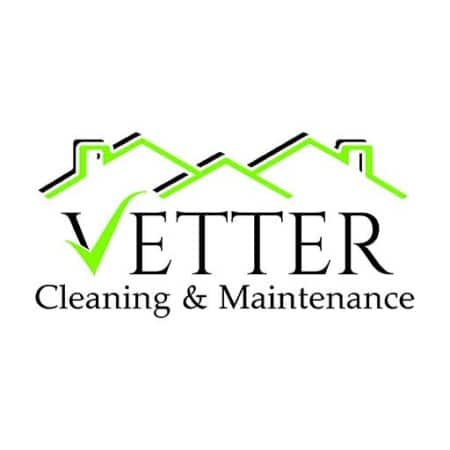Pets bring joy, companionship, and a sense of warmth to our homes. However, they also bring fur, dander, and the occasional mess. For pet owners, maintaining a clean and fur-free home can be a constant challenge. But fear not! With the right strategies and a bit of effort, you can keep your home spotless and welcoming, even with furry friends around. This comprehensive guide will provide you with practical tips and tricks to manage pet hair, tackle messes, and maintain a clean home. Whether you have a dog, cat, or any other furry companion, these tips will help you create a clean and comfortable living environment for both you and your pets.

1. Establish a Regular Grooming Routine
One of the most effective ways to reduce pet hair in your home is to establish a regular grooming routine. Regular grooming not only keeps your pet looking their best but also minimizes shedding and the amount of fur that ends up on your furniture and floors.
Grooming Tips:
- Brush Regularly: Depending on your pet’s breed and coat type, brushing should be done daily or at least a few times a week. Use a brush designed for your pet’s specific coat to remove loose fur and prevent matting.
- Bathing: Regular baths help remove loose fur and dander. Use a pet-friendly shampoo and follow the recommended bathing schedule for your pet’s breed.
- Professional Grooming: Consider taking your pet to a professional groomer for regular grooming sessions. Grooming professionals have the tools and expertise to manage shedding and keep your pet’s coat healthy.
By maintaining a regular grooming routine, you can significantly reduce the amount of pet hair in your home and keep your pet comfortable and clean.
2. Invest in High-Quality Cleaning Tools
Having the right cleaning tools can make a world of difference when it comes to managing pet hair and keeping your home clean. Invest in high-quality cleaning tools designed to tackle pet hair and messes effectively.
Essential Cleaning Tools for Pet Owners:
- Vacuum Cleaner: Invest in a vacuum cleaner with strong suction and a pet hair attachment. Look for models with HEPA filters to capture pet dander and allergens.
- Lint Rollers: Keep lint rollers handy to quickly remove pet hair from clothing, furniture, and other surfaces.
- Rubber Broom: A rubber broom is excellent for sweeping up pet hair from hard floors and carpets. The rubber bristles attract and lift pet hair effectively.
- Microfiber Cloths: Use microfiber cloths for dusting and wiping down surfaces. They are great for trapping pet hair and dust without spreading it around.
By using the right cleaning tools, you can efficiently manage pet hair and keep your home looking clean and fur-free.
3. Create Pet-Free Zones
Designating certain areas of your home as pet-free zones can help contain pet hair and messes. This is especially useful for keeping bedrooms, home offices, and other important spaces clean and fur-free.
Tips for Creating Pet-Free Zones:
- Use Baby Gates: Use baby gates to block off areas where you don’t want your pets to go. This is a simple and effective way to create pet-free zones.
- Train Your Pet: Train your pet to stay out of certain areas. Consistent training and positive reinforcement can help establish boundaries.
- Provide Alternatives: Make sure your pet has comfortable and inviting spaces where they are allowed. Provide cozy beds, blankets, and toys in designated pet-friendly areas.
By creating pet-free zones, you can keep certain areas of your home clean and free from pet hair and messes.
4. Use Washable Covers and Bedding
Pet hair and dander can quickly accumulate on furniture and bedding. Using washable covers and bedding can make it easier to keep these areas clean and fresh.
Tips for Using Washable Covers and Bedding:
- Furniture Covers: Use washable furniture covers on sofas, chairs, and other upholstered furniture. Choose covers that are easy to remove and machine washable.
- Pet Beds: Choose pet beds with removable, washable covers. Wash the covers regularly to keep them clean and free from pet hair and odors.
- Blankets and Throws: Use blankets and throws on furniture where your pet likes to rest. These can be easily removed and washed as needed.
By using washable covers and bedding, you can keep your furniture and pet’s resting areas clean and free from pet hair.
5. Vacuum and Sweep Regularly
Regular vacuuming and sweeping are essential for keeping pet hair and dander under control. Establish a cleaning routine that includes frequent vacuuming and sweeping to maintain a clean home.
Vacuuming and Sweeping Tips:
- Daily Sweeping: Sweep hard floors daily to remove pet hair and dirt. Use a rubber broom or a vacuum cleaner with a hard floor attachment.
- Frequent Vacuuming: Vacuum carpets, rugs, and upholstered furniture at least a few times a week. Pay extra attention to areas where your pet spends the most time.
- Use Attachments: Use vacuum attachments designed for pet hair to clean furniture, stairs, and other hard-to-reach areas.
By vacuuming and sweeping regularly, you can keep pet hair and dander under control and maintain a clean home.
6. Deep Clean Your Home
In addition to regular cleaning, it’s important to deep clean your home periodically to remove pet hair, dander, and odors that may have accumulated over time. Deep cleaning ensures that your home stays fresh and hygienic.
Deep Cleaning Tips:
- Carpet Cleaning: Deep clean carpets and rugs using a carpet cleaner or hire professional cleaning services. This helps remove embedded pet hair, dirt, and odors.
- Upholstery Cleaning: Clean upholstered furniture using a fabric cleaner or steam cleaner. Pay attention to areas where your pet likes to rest.
- Air Duct Cleaning: Consider having your air ducts cleaned to remove pet hair and dander that may have accumulated in your HVAC system.
- Wash Curtains and Blinds: Wash or vacuum curtains and blinds to remove pet hair and dust.
By deep cleaning your home regularly, you can maintain a fresh and hygienic living environment for both you and your pets.
7. Manage Pet Odors
Pet odors can be a common issue for pet owners. Managing pet odors is essential for keeping your home smelling fresh and clean.
Tips for Managing Pet Odors:
- Regular Bathing: Bathe your pet regularly to keep them clean and reduce odors. Use a pet-friendly shampoo and follow the recommended bathing schedule for your pet’s breed.
- Clean Pet Bedding: Wash your pet’s bedding regularly to remove odors and keep it fresh.
- Use Air Purifiers: Use air purifiers with HEPA filters to remove pet dander and odors from the air.
- Deodorize Carpets and Furniture: Sprinkle baking soda on carpets and furniture, let it sit for 15 minutes, and then vacuum it up to remove odors.
By managing pet odors, you can keep your home smelling fresh and inviting.
8. Clean Pet Areas Regularly
Areas where your pet eats, sleeps, and plays can quickly become dirty and messy. Regularly cleaning these areas helps maintain a clean and hygienic home.
Tips for Cleaning Pet Areas:
- Food and Water Bowls: Wash your pet’s food and water bowls daily to prevent the buildup of bacteria and odors.
- Litter Boxes: Scoop litter boxes daily and change the litter regularly to keep them clean and odor-free.
- Pet Toys: Wash pet toys regularly to remove dirt and bacteria. Check for any damaged toys and replace them as needed.
- Pet Crates and Carriers: Clean pet crates and carriers regularly to keep them fresh and hygienic.
By cleaning pet areas regularly, you can maintain a clean and healthy environment for your pet and your home.
9. Use Pet-Friendly Cleaning Products
When cleaning your home, it’s important to use pet-friendly cleaning products that are safe for your furry friends. Many conventional cleaning products contain chemicals that can be harmful to pets.
Tips for Choosing Pet-Friendly Cleaning Products:
- Read Labels: Look for cleaning products labeled as pet-friendly or non-toxic. Avoid products with harsh chemicals, fragrances, and dyes.
- Natural Cleaners: Consider using natural cleaning products like vinegar, baking soda, and lemon juice. These are effective and safe for pets.
- Test Products: Test new cleaning products in a small area to ensure they don’t cause any adverse reactions for your pet.
By using pet-friendly cleaning products, you can keep your home clean and safe for your furry friends.
10. Hire Cleaning Professionals
While these tips can help you maintain a clean home, there’s no substitute for the thoroughness of cleaning professionals. Regular professional cleanings can ensure that your home stays in top condition and reduce the stress of having to tackle deep cleaning tasks on your own.
Benefits of Hiring Cleaning Professionals:
- Expertise: Cleaning professionals have the expertise and experience to tackle tough cleaning tasks and pet-related messes.
- Specialized Tools: They have specialized tools and products to clean hard-to-reach areas and remove pet hair and odors effectively.
- Time-Saving: Hiring cleaning professionals can save you time and allow you to focus on other important tasks.
- Deep Cleaning: Professional cleaners can provide deep cleaning services that go beyond regular cleaning routines, ensuring your home stays fresh and hygienic.
By hiring cleaning professionals, you can maintain a clean home with minimal stress and effort.
11. Protect Your Floors
Pets can be tough on floors, especially if they have claws or tend to track in dirt and mud. Protecting your floors can help keep them looking clean and new.
Floor Protection Tips:
- Area Rugs and Mats: Use area rugs and mats in high-traffic areas to protect your floors from scratches and dirt. Choose rugs that are easy to clean and maintain.
- Paw Cleaning Station: Set up a paw cleaning station near the entrance to your home. Use a mat and a towel to clean your pet’s paws before they come inside.
- Nail Trimming: Keep your pet’s nails trimmed to prevent scratches on your floors. Regular nail trimming also helps keep your pet comfortable.
By protecting your floors, you can maintain their appearance and reduce the need for frequent cleaning and repairs.
12. Train Your Pet
Training your pet can go a long way in maintaining a clean home. Teaching your pet good habits and behaviors can help prevent messes and make cleaning easier.
Training Tips:
- House Training: Ensure your pet is properly house-trained to prevent accidents in the home. Consistent training and positive reinforcement are key.
- No Jumping on Furniture: Train your pet not to jump on furniture if you want to keep it fur-free. Provide comfortable alternatives like pet beds and blankets.
- Clean Up After Themselves: Teach your pet to clean up after themselves, such as putting away toys after playtime.
By training your pet, you can create a cleaner and more organized living environment.
13. Use Air Purifiers
Air purifiers can help improve indoor air quality by removing pet dander, hair, and odors from the air. This is especially beneficial for pet owners with allergies or respiratory issues.
Benefits of Air Purifiers:
- Remove Allergens: Air purifiers with HEPA filters can capture pet dander and other allergens, improving air quality.
- Reduce Odors: Air purifiers with activated carbon filters can help reduce pet odors, keeping your home smelling fresh.
- Improve Health: Cleaner air can improve overall health and well-being for both you and your pets.
By using air purifiers, you can create a healthier and more comfortable living environment.
14. Wash Pet Collars and Leashes
Pet collars and leashes can accumulate dirt, odors, and bacteria over time. Regularly washing these items helps keep them clean and fresh.
Tips for Washing Pet Collars and Leashes:
- Hand Wash: Hand wash collars and leashes using mild soap and warm water. Rinse thoroughly and let them air dry.
- Machine Wash: Some collars and leashes are machine washable. Check the manufacturer’s instructions and use a gentle cycle.
- Inspect for Wear and Tear: Regularly inspect collars and leashes for signs of wear and tear. Replace them if they are damaged or frayed.
By washing pet collars and leashes, you can keep them clean and hygienic for your pet.
15. Clean Pet Food and Water Areas
Pet food and water areas can become messy and attract pests if not cleaned regularly. Keeping these areas clean helps maintain a hygienic environment for your pet.
Tips for Cleaning Pet Food and Water Areas:
- Wipe Down Surfaces: Wipe down the area around your pet’s food and water bowls daily to remove spills and crumbs.
- Use a Mat: Place a mat under your pet’s food and water bowls to catch spills and make cleaning easier.
- Clean Bowls Daily: Wash your pet’s food and water bowls daily to prevent the buildup of bacteria and odors.
By keeping pet food and water areas clean, you can maintain a hygienic environment for your pet and your home.
16. Address Accidents Promptly
Accidents happen, especially with young or elderly pets. Addressing accidents promptly helps prevent stains and odors from setting in.
Tips for Addressing Accidents:
- Blot, Don’t Rub: Blot the affected area with a clean cloth or paper towel to absorb as much liquid as possible. Avoid rubbing, as this can spread the stain.
- Use Enzymatic Cleaners: Use enzymatic cleaners designed for pet stains to break down and remove odors and stains effectively.
- Rinse and Dry: Rinse the area with water and blot dry. Use a fan or open windows to help the area dry quickly.
By addressing accidents promptly, you can prevent stains and odors from becoming permanent.
17. Keep Your Pet Healthy
A healthy pet is less likely to have issues with excessive shedding, odors, and accidents. Regular veterinary care and a balanced diet can help keep your pet healthy and reduce cleaning challenges.
Tips for Keeping Your Pet Healthy:
- Regular Vet Visits: Schedule regular check-ups with your veterinarian to monitor your pet’s health and address any issues promptly.
- Balanced Diet: Feed your pet a balanced diet that meets their nutritional needs. A healthy diet can reduce shedding and improve coat condition.
- Exercise: Ensure your pet gets regular exercise to maintain a healthy weight and overall well-being.
By keeping your pet healthy, you can reduce cleaning challenges and enjoy a happier, healthier companion.
18. Use Pet Hair Removal Tools
Pet hair removal tools can make it easier to manage pet hair on furniture, clothing, and other surfaces. These tools are designed to effectively remove pet hair without damaging surfaces.
Popular Pet Hair Removal Tools:
- Lint Rollers: Lint rollers are great for quickly removing pet hair from clothing and upholstery.
- Pet Hair Remover Brushes: These brushes are designed to lift and remove pet hair from furniture and carpets.
- Pet Hair Gloves: Pet hair gloves have rubber nubs that attract and remove pet hair while you pet your furry friend.
By using pet hair removal tools, you can keep your home and belongings fur-free with minimal effort.
19. Clean Pet Toys and Accessories
Pet toys and accessories can accumulate dirt, bacteria, and odors over time. Regularly cleaning these items helps keep them fresh and safe for your pet.
Tips for Cleaning Pet Toys and Accessories:
- Wash Soft Toys: Machine wash soft toys using a gentle cycle and mild detergent. Air dry or use a low heat setting in the dryer.
- Clean Hard Toys: Wash hard toys with warm, soapy water. Rinse thoroughly and let them air dry.
- Inspect for Damage: Regularly inspect toys and accessories for signs of wear and tear. Replace any damaged items to ensure your pet’s safety.
By cleaning pet toys and accessories, you can keep them fresh and safe for your pet to enjoy.
20. Stay Organized
Staying organized can help you manage pet-related cleaning tasks more efficiently. Create a cleaning schedule and keep track of tasks to ensure nothing is overlooked.
Organizational Tips:
- Create a Cleaning Schedule: Develop a cleaning schedule that includes daily, weekly, and monthly tasks. This helps you stay on top of cleaning and ensures all areas are addressed.
- Use a Checklist: Use a checklist to keep track of cleaning tasks and mark them off as you complete them.
- Set Reminders: Set reminders on your phone or calendar for important cleaning tasks, such as deep cleaning or grooming appointments.
By staying organized, you can manage pet-related cleaning tasks more efficiently and maintain a clean and fur-free home.
Conclusion
Maintaining a clean and fur-free home as a pet owner may seem challenging, but with the right strategies and tools, it is entirely achievable. By establishing a regular grooming routine, investing in high-quality cleaning tools, and creating pet-free zones, you can effectively manage pet hair and messes. Regular vacuuming, deep cleaning, and managing pet odors are essential for keeping your home fresh and hygienic. Using pet-friendly cleaning products, protecting your floors, and training your pet can further reduce cleaning challenges. Hiring cleaning professionals for deep cleaning can provide an extra level of thoroughness and ensure your home stays in top condition. By following these tips and staying organized, you can enjoy a clean and comfortable living environment for both you and your furry friends.
About The Author
Vetter Cleaning & Maintenance in Colorado Springs, CO, offers a variety of cleaning services to meet most residential cleaning needs, including recurring maid services, deep cleaning services, and move-in/move-out cleaning services. If you live in the Colorado Springs area, we invite you to request a free home cleaning quote.
Quote Form
← Next Blog Post: 20 Time-Saving Cleaning Hacks for Busy Homeowners

